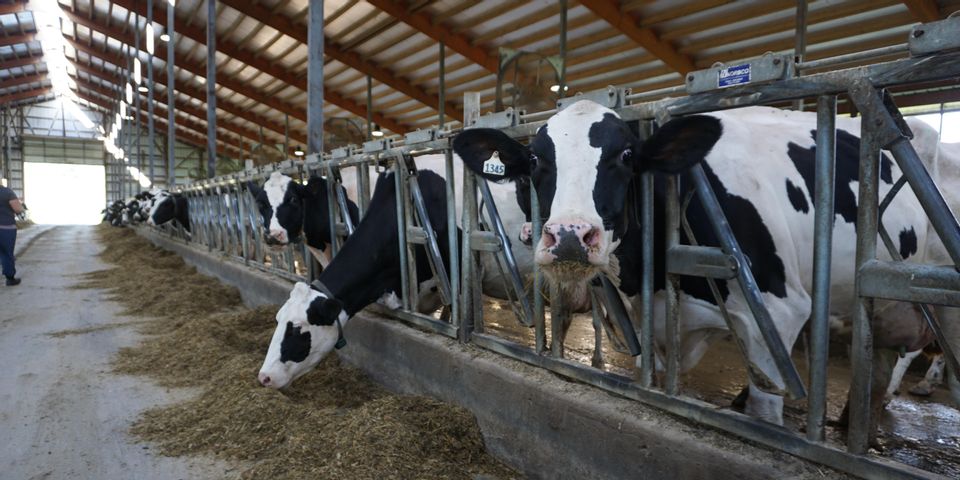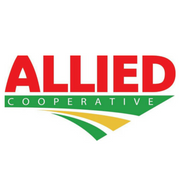Keys to a Successful Transition Period in Dairy Cows

The transition period for a cow or heifer is the most crucial stage because it’s the foundation for what the rest of her lactation builds from. If it begins with issues such at ketosis, metritis, milk fever, retained placentas, or other setbacks, this will not only cost the farm money in lost production and treatments to get her back on track, but she will not reach her lactation peak as quickly. Here are a few items that greatly impact transition cow success: cow comfort, stress management and nutrition.
Cow comfort is essential in a successful transition cow program. Having a clean, dry and adequate size space for laying is essential. Appropriate stall size varies by breed, but adequate dimensions can be found on the Dairyland Initiative website. Water access also plays a large role; a cow should ideally have 3 linear inches of water space. Having two water access points is also a good idea to help avoid boss cow issues and overcrowding in the summer. Heat abatement, even though it’s not an issue now, but come summer it’s a huge factor in determining transition success. Adequate fans, soaker lines, and water availability are crucial to avoid heat stress effects. Another area that can be overlooked during the dry period is foot health. If possible, it’s a good idea to run them through the foot bath during the dry period or incorporate a mineral that contains elements to help prevent digital dermatitis. A cow can walk and stand better without hoof problems; therefore, she’ll be able to stand longer at the bunk and obtain adequate amounts of water in order to milk her best.
Many of these cow comfort items play into reducing stress. A couple aspects to consider are pens moves and bunks space. Pen moves should not occur within 7 days before calving. When a cow is moved into a new pen, there are two days of stress before she is worked into the group of cows. Another tactic to reduce stress with pen moves is to move a group of cows. Selecting a group of 10 or more cows to move at a time will greatly reduce stress. If maternity pens are used, move the cow no more than two days before due date. It’s ideal to move the cow when feet are seen. If pre-fresh pens are used, move them 2-3 week prior to calving. This will give them time to adjust to the new area and diet. Now looking at bunk space, 80% stocking rate of headlocks is ideal. Low rank cows, typically your first lactation animals, need that adequate bunk space to transition well. Once over the 80% stocking density, you usually see a loss of 1.6 lbs of milk per 10% increase in stocking density.
Looking at nutrition, farms either do a one group dry cow or a far-off and close-up group. The far-off group will have higher intakes and less nutrition density. The close-up group will have smaller intakes, but the nutrients will be ramped up to help her prepare for her coming lactation. Either method can be effective depending on the farm and their production goals. Body condition is a large factor when looking at a nutrition program. The goal is to maintain her body weight. Weight should not be lost and you don’t want her to gain more than a .5 body condition score during the dry period. Her body condition should be monitored throughout her dry period. When deciding how to feed, the goal is to minimize issues like ketosis, retained placentas, milk fever, and metritis. Having adequate amounts of minerals, energy, fiber and protein are essential to help her avoid these setbacks. Each farm is different, so consulting with your nutritionist is the best method to put an effective nutrition program together for your farm.
Event though there are many factors that impact your cow’s success during her transition period, there is no better reward than to have a cow move smoothly into her lactation.
Allied Cooperative is a cooperative with services ranging from agronomy, feed and grain to LP and refined fuels to auto parts, hardware, tires and convenience stores. Allied Cooperative has locations the following Wisconsin communities: Adams, Arcadia, Blair, Galesville, Mauston, Melrose, Mindoro, Plainfield, Plover, Tomah, West Salem and Wisconsin Rapids. For more information about Allied Cooperative go to www.allied.coop.
About the Business
Have a question? Ask the experts!
Send your question

